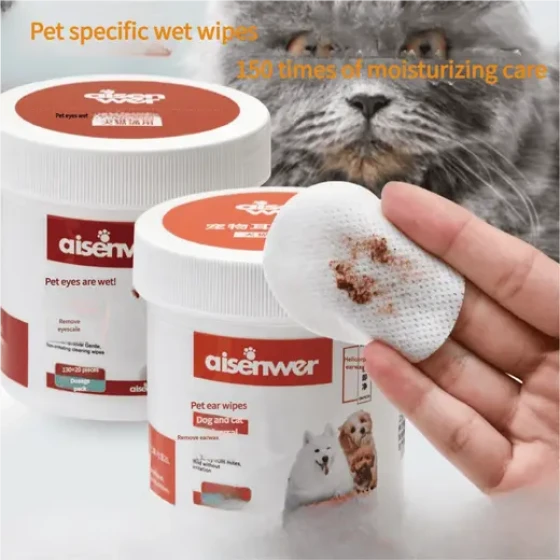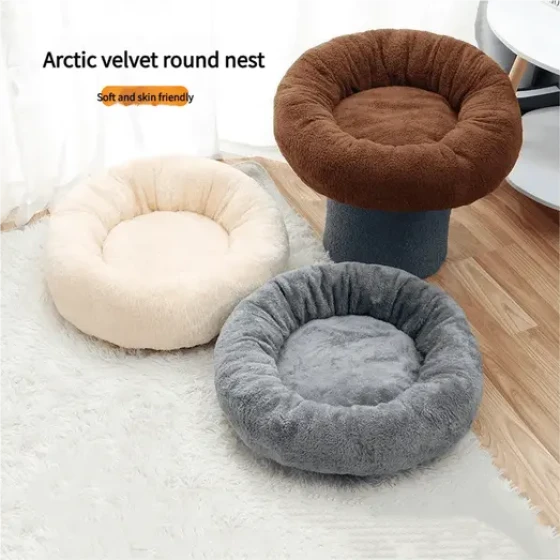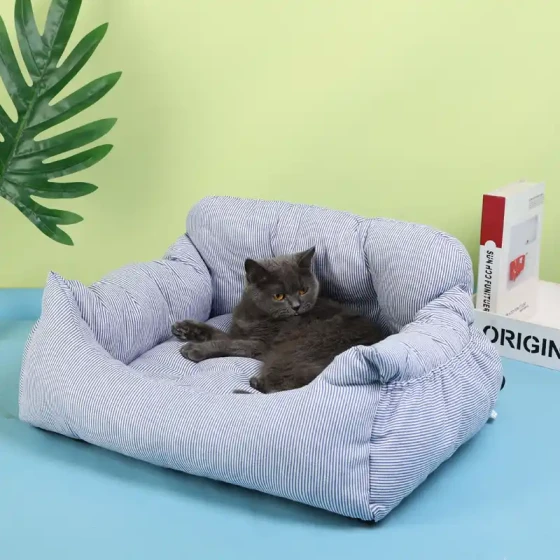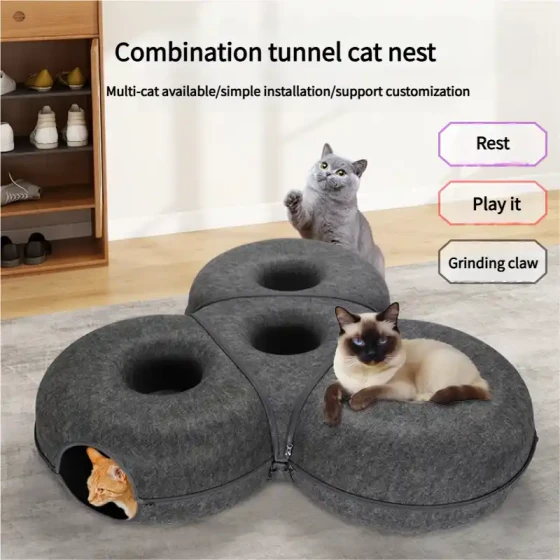Reasons Why Cats Eat Plastic_How to Effectively Stop Cats from Chewing Plastic
Cats chewing and even swallowing plastic products is a troubling behavior that many cat owners may encounter. Simply put, cats eat plastic for various reasons, including interest in the specific texture or sound of plastic, boredom, seeking attention, or it may even be a sign of pica. In severe cases, this could pose potential health dangers to cats, requiring timely intervention and prevention measures.
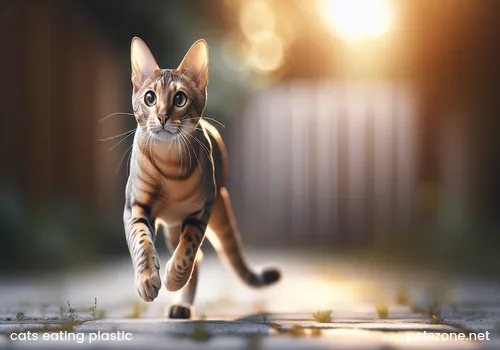
Understanding why cats like to chew and even swallow plastic is key to solving this problem. It is not simply that the "cat is dumb" or "naughty"; there may be hidden physiological, psychological, or behavioral causes behind it.
Possible Reasons Why Cats Chew Plastic
Chewing on plastic bags, plastic wraps, and other items may be medically related to a condition called pica. Pica refers to an animal eating non-nutritive, non-food substances. However, not all plastic-chewing behaviors are pica and may be due to other relatively simple or complex reasons:
- Appeal of texture and sound: Many plastic products, especially plastic bags, make a crisp "crackling" sound when touched or chewed. This sound, along with the unique smooth or chewy texture of plastic, may strongly attract cats, stimulating their hunting instincts just like playing with prey. Imagine when you feel bored and like squeezing bubble wrap, cats may also enjoy that "crackling" sensation.
- Boredom or lack of stimulation: Cats who are long-term deprived of toys, interaction, or environmental stimulation may feel bored and frustrated. Chewing plastic might be a way to kill time and seek stimulation, similar to how humans unconsciously bite pen caps when bored.
- Seeking attention: Some clever cats may notice that whenever they start chewing plastic, their owners immediately show up and give attention (whether scolding or gentle discouragement). To gain their owner's interaction, they might repeat this behavior even if it annoys their owner. For them, “bad” attention is better than no attention.
- Oral discomfort or teething: Young cats may experience gum discomfort during teething and chew hard objects to relieve it. Although plastic is not an ideal teething tool, they might try it. Additionally, some oral diseases can cause cats to chew to ease discomfort.
- Food residue smell: Some plastic packaging may retain food odors, such as snack bags or meat packaging. Cats’ sensitive sense of smell leads them to explore these scent sources, resulting in chewing the packaging.
- Stress or anxiety: Changes in environment, family member changes, tense relationships with other pets can cause stress or anxiety in cats. Like humans biting their nails to relieve tension, cats may chew non-food items to cope with negative emotions.
- Nutritional deficiencies (less common): Although rare, theoretically severe nutrient deficiencies may cause cats to seek non-food sources for compensation. However, for most cats fed balanced commercial diets, this is unlikely the main cause.
Potential Dangers of Cats Chewing Plastic
Cats chewing plastic is not just an unsightly behavior, more importantly, it may seriously threaten their health:
- Choking hazard: Small plastic pieces can get stuck in a cat’s throat or esophagus, causing choking.
- Gastrointestinal blockage: Ingested plastic cannot be digested and may cause blockages in the stomach or intestines, preventing normal food passage. This is an emergency requiring immediate veterinary care and possibly surgery to remove the blockage. Symptoms include vomiting, loss of appetite, lethargy, abdominal pain, etc.
- Gastrointestinal injury: Sharp or hard plastic edges may scratch or puncture the cat’s esophagus, stomach, or intestinal walls, leading to internal bleeding or infection.
- Toxicity risk: Some plastic products may contain chemicals harmful to cats. Long-term chewing or ingestion could cause chronic poisoning.
How to Effectively Stop Cats from Chewing Plastic
Stopping cats from chewing plastic requires multiple approaches targeting possible causes:
- Remove all plastic items: This is the most direct and effective method. Keep plastic bags, plastic packaging, wires, and all other plastic items that may attract cats’ chewing interest out of their reach. Just as homes with young children keep dangerous items out of reach, cat households must do “cat-proofing.”
- Provide abundant alternatives: Since cats may chew due to boredom or liking the texture, provide them with safe and attractive alternatives.
- Chew toys: Choose chew toys specially designed for cats, usually made from durable, non-toxic materials.
- Interactive toys: Use teaser wands, laser pointers (avoid shining directly in cats' eyes), and other toys to interact with cats, expend their energy, and reduce boredom.
- Food puzzle toys: Hide cat food or treats in puzzle toys, encouraging cats to chew and paw to get food, satisfying chewing desires and providing mental challenges.
- Scratching boards/cat trees: Provide appropriate scratching and climbing areas to satisfy natural instincts and divert attention from plastic.
- Increase interaction and playtime: Spend daily time playing with cats, especially during their energetic periods (usually morning and evening). Quality interaction not only consumes their energy but also strengthens your bond and reduces destructive behavior caused by boredom or attention-seeking.
- Assess the cat’s diet: Ensure high-quality, nutritionally balanced commercial cat food is provided. If nutritional deficiency is suspected, or cats chew other non-food items, consult a veterinarian to rule out nutritional issues.
- Handle food-scented packaging properly: Clean up plastic packaging with food residue promptly, or seal and store it where cats cannot access, cutting off motivation from the smell.
- Reduce cat’s stress and anxiety: If chewing behavior is related to stress or anxiety, identify the source and alleviate it. Some approaches:
- Create safe hiding spots: Provide high or secluded areas for cats to feel secure.
- Use pheromone products: Certain cat pheromone products (such as Feliway) can help relax cats.
- Maintain stable routines: Keep feeding, playing, and resting schedules consistent.
- Gradually introduce new members or changes: When new family members (people or pets) or environment changes occur, do so gradually to allow adaptation.
- Consult veterinarian or animal behaviorist: For severe anxiety, professional help including behavior modification or medication may be needed.
- Consider using pet-safe deterrents: For plastic items difficult to remove completely (like wires), spray pet-specific bitter sprays to discourage chewing. Choose harmless products and avoid causing fear or aversion in cats.
- Positively reinforce good behavior: When cats play with safe toys or show other good behaviors, immediately offer praise and rewards (treats or petting) to encourage repetition.
When to Seek Veterinary Help
If you notice any of the following, take your cat to the vet immediately:
- Persistent vomiting or retching.
- Loss of appetite or refusal to eat.
- Lethargy or listlessness.
- Abdominal swelling or pain upon touch.
- Difficulty defecating or abnormal stools (such as blood or mucus).
- Clearly seeing cat swallow large or sharp plastic pieces.
- Sudden onset and severe plastic chewing behavior accompanied by other abnormal symptoms.
- Plastic chewing behavior continues or worsens despite various attempts to stop it.
The veterinarian can perform physical exams, X-rays, or ultrasound imaging to determine if gastrointestinal blockage or injury exists and provide appropriate treatment.
FAQ
- Q: Can cats get poisoned by chewing plastic bags?
A: While most plastic bags do not contain highly toxic substances, long-term chewing and ingestion may lead to accumulation of harmful chemicals. More importantly, plastic bags may cause choking or gastrointestinal obstruction, which are more immediate and serious risks. - Q: Why is my cat interested only in certain types of plastic?
A: Cats' plastic preferences may relate to texture, thickness, sounds, or lingering odors on the plastic. Different cats have different likes. - Q: Are kittens more prone to chewing plastic than adult cats?
A: Kittens may be more likely to try chewing various objects, including plastic, during teething and exploration. However, adult cats may also chew plastic due to boredom, stress, or pica. - Q: Is punishing cats for chewing plastic effective?
A: Harsh punishment usually is ineffective and may cause fear or rebelliousness. Better methods include removing triggers, providing alternatives, and positively reinforcing good behavior. - Q: What should I do if my cat swallows a small piece of plastic?
A: Small smooth pieces may sometimes pass safely through digestion. But if the piece is large or sharp, or if symptoms like vomiting or loss of appetite appear, seek veterinary care immediately. The best approach is to prevent cats from accessing or swallowing any plastic.
Summary
Cats chewing plastic is an issue that requires serious attention. By understanding the reasons behind the behavior, combining environmental management, offering abundant entertainment and interaction, and focusing on the cat’s psychological health, this behavior can often be effectively reduced or stopped. Remember, patience and careful observation are keys to solving behavioral problems. If pica or other underlying health issues are suspected, timely professional veterinary help is crucial because the cat’s health and safety come first.
